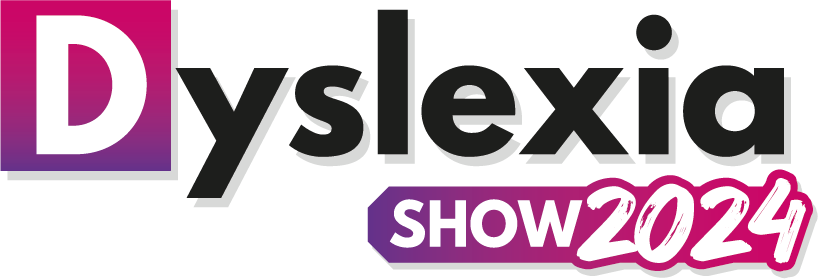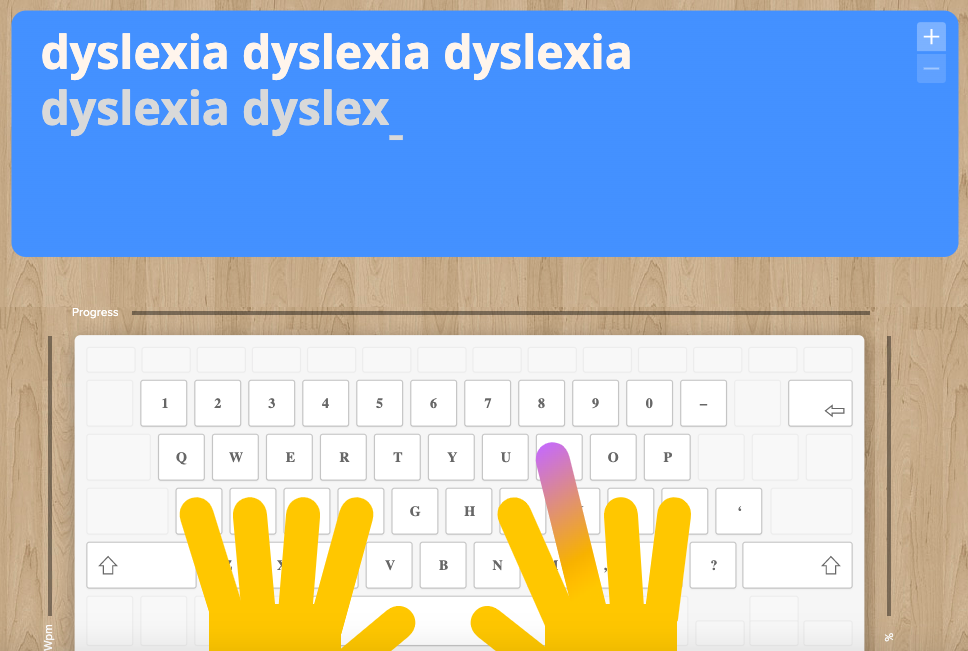A good way to think about dyslexia is just as a different way of processing in the brain. It makes sense that students who process language in a different way will require alternative approaches to teaching and learning, in order to meet their needs. So what does this have to do with typing? Well, learning to touch-type can help someone with dyslexia strengthen their literacy skills. Let’s have a look at how.
What is dyslexia?
Dyslexia is a specific learning difference that researchers estimate affects at least 10% of the world’s population. No two individuals with dyslexia are alike and symptoms can range from mild to severe.
It’s quite common for individuals who have dyslexia to struggle with splitting words into their component sounds. Spelling requires an individual to segment a word into sounds and then find the letters that go with those sounds. The reverse operation happens during decoding. A letter or group of letters is connected to how they sound and if the word is familiar, its meaning is activated.
This is one of the reasons why reading and spelling can be so difficult if you have dyslexia (rhyming can be a challenge too!).
A different approach to teaching and learning
Dyslexia has nothing to do with low intelligence. Quite the opposite is true in fact! Many individuals with dyslexia demonstrate a creative flair and excel at thinking outside of the box. They may bring together ideas from different disciplines and come up with novel approaches to problem solving.
Dyslexia doesn’t have to be seen as a negative, it’s just a different way of processing language in the brain. That’s why different approaches to teaching reading and spelling can be so effective.
Reading skills and typing
Decoding
When a multi-sensory approach to learning typing is taken, learners see a letter or group of letters on screen, type a key or group of keys and hear the associated sound or sounds. This leads to an improvement in sound-letter mapping skills. If the words they are typing are taught in a deliberate sequence, following a phonics-based curriculum, they are not only learning to decode, but also understanding the basics of English phonics.
Sight reading
While decoding is the gateway to reading, sounding words out is a slow and cognitively taxing process. Sight reading is when an individual recognises the written form of a word and maps it directly to its meaning. It’s more efficient and much faster. The more an individual sight reads, the more fluent their reading becomes.
Multi-sensory typing can help here too. If a learner repeatedly sees a word’s written form in a typing program, while also simultaneously hearing the spoken form read aloud, it makes it easier for them to retrieve that spoken form the next time they encounter the word in a book.
Spelling skills and typing
Individuals with dyslexia may spell a word correctly one day and not the next. Short words which tend to be high frequency (for example: the, about, does, because) can be particularly hard and dyslexia can affect short-term memory too.
Touch-typing employs a round-about way of getting a word’s written form into memory. In touch-typing, an individual learns which fingers type which letters, and then practises typing words by touch alone, without looking down at the keyboard.
Over time, the movements needed to type each letter and group of letters become automatic and easier to execute. Moreover, the sequence of movements required to type an entire word can also be automatised the more it is typed.
In this way, a learner can acquire a word’s spelling using muscle memory in the hands. What’s better, once they’ve written something on the computer, they can also use spell-check to quickly revise any errors without the embarrassment of crossing out work.
More reasons to write on the computer
Some children and young adults with dyslexia have messy handwriting. This is not because they are lazy, it’s just because the amount of cognitive energy required for them to process language is more than for other individuals. They may feel exhausted at the end of a writing assignment, and attending to more superficial aspects, such as letter formation and spacing, may not be a priority for them.
In this situation, writing on the computer provides individuals who have dyslexia with a much needed accommodation. Particularly in the case of students who are taking notes, it can also ensure they can read their own writing when it is time to revise for an exam.
A dyslexia-friendly typing program
Writing on the computer is much more efficient if an individual can touch-type. The problem then becomes finding a program that can teach a learner with dyslexia how to type without frustrating them or causing additional stress and anxiety around literacy skills.
This is where Touch-type Read and Spell (TTRS) comes in. For over 30 years, TTRS has provided a dyslexia-friendly, Orton-Gillingham-based approach to typing. It uses the ‘Alpha to Omega’ curriculum designed by Bev Hornsby to teach typing using whole words from the start. There are no nonsense key combinations and students learn phonics and spelling rules by typing groups of words in a multi-sensory way.
Learning is self-paced with a focus on accuracy over speed, there is a free writing interface that tracks spelling, and users have the option to add their own spelling words and create their own typing modules. A big positive is that the program can be used by learners of all ages, including adults. There are no childish graphics or advertisements and the interface is distraction-free.
You can learn more about Touch-type Read and Spell and how it supports children and adults with dyslexia by visiting our website www.readandspell.com.
To learn more about how reading and spelling work, or look through our articles on dyslexia learning and teaching strategies, visit the Read and Spell Blog or follow us on social media: Facebook, Instagram, Twitter, YouTube, TikTok
5 Tips for learning how to type
- Set yourself up for success by ensuring you have the right posture. Are your desk and keyboard at the correct height to avoid injury? You can download this free poster for a visual guide to keep near your work station.
- Remember a little practice on a regular basis goes a long way. Particularly in the beginning, keep typing sessions short so you don’t become tired. When we’re tired we tend to make more mistakes and this can be quite demotivating.
- Don’t worry – it gets easier the longer you keep at it. One of the hardest parts of learning to touch-type is forgetting the old way of typing with two fingers and learning to orient your technique around the home row keys. The more you keep your eyes on the screen and suppress the temptation to look down, the easier it will be.
- Use play dough to get your hands ready. If you’re finding a particular key is difficult to reach, try stretching your hands and fingers out with a little play dough before you begin a session. If you can’t remember where a key is, you can also place a bit of Blu Tack on that key as a guide you can use to avoid looking down.
- Try to have some fun. In addition to working your way through a typing course, you can also practise your technique by typing along to the lyrics of your favourite song. Can you type with your eyes closed or in the dark? What words would be a challenge – there might be a certain line in ‘Mary Poppins’ you could attempt for starters!

